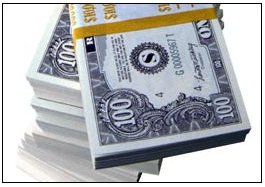Pay Incentive Programs That Work
In a Piece Rate Environment
Pay incentive programs in businesses that pay a piece rate can become a double-edged sword. They are excellent motivators in the short term to boost productivity and fill orders quickly. If performance pay is used to ascertain the workforce’s maximum productivity with an eye on increasing the number of pieces for the rate paid, it is likely that workers will conspire to artificially slow down quick workers.(1) It stands to reason that in this work environment, a performance pay option should only be exercised for a temporary increase of production.
Against a Performance Ceiling
Incentive pay schemes are unlikely to succeed if they are tied to out-performing a previously set performance record. For example, if a company has previously used pay incentive programs to boost productivity, it stands to reason that executives kept a close watch on the performance levels that workers achieved. Tying a new pay scheme to achieving beyond the highest level of performance set will likely prove counter-productive, since it is unlikely that workers will significantly outperform an earlier record. Frustrated workers will likely slow down rather than work faster in the long run.
Discretionary Pay
In some cases, there is a tiered system that rewards the individual worker, the supervisor and the entire team to which both the worker and the supervisor belong. In this three-tiered pay structure, discretionary pay allows for the incentivizing of certain aspects, such as willingness to work undesirable swing-shifts, improving team productivity and meeting tight deadlines. Researchers suggest that performance pay(2) is actually becoming more effective in rewarding workers than a generous salary.
How to Create a Workable Pay Incentive Program
- Establish a purpose. Is the incentive pay tied to a specific performance rate or time frame?
- Who qualifies? Are there workers who are exempt from the incentive program? Do salaried workers participate or is the incentive only open to hourly workers?
- Define exceptional performance. Base salary rewards for workers performing the job outlined in the job description. Doing it well is a basic expectation of a company. At what point does ‘a job well done’ become a job that deserves additional remuneration?
- Determine frequency of pay. Will the incentive be paid once a month, once every pay check or on a quarterly basis? Depending on the nature of the incentives, it may be necessary to tabulate numbers for a quarter (or more) to determine the amount of the pay.
- Set up a monitoring system. Who is in charge of calculating incentives earned? Who tracks productivity? Who double-checks the figures and monitors for accuracy?
Of course, pay incentive programs are only as productive as the workers that take advantage of them. In the case of a waste management company,(3) workers actually began to cut corners in order to earn the additional pay. Ensuring that this type of work philosophy does not take over in a business, must be a priority for executives rolling out any type of incentive program.
Sources
- https://www.cnr.berkeley.edu/ucce50/ag-labor/7labor/08.htm
- https://www.coastal.edu/business/cbj/pdfs/articles/Schraeder-IncentivePay.pdf
- https://findarticles.com/p/articles/mi_m3495/is_1_53/ai_n24250589/?tag=rbxcra.2.a.33
Photo Source: “A stack of Money” by FBI Buffalo Field Office/Wikimedia Commons at https://commons.wikimedia.org/wiki/File:Stack_of_money.jpg
